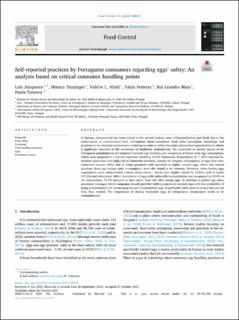| dc.description.abstract | In Europe, salmonellosis has been ranked as the second leading cause of hospitalization and death due to the consumption of contaminated food. Information about consumers’ food safety perception, knowledge and practices in the domestic environment is lacking in order to define the main intervention opportunities to obtain a significant reduction in the occurrence of foodborne salmonellosis. We conducted an on-line survey of the Portuguese population on self-reported domestic egg handling and occurrence of illness from egg consumption, which were analysed in a Critical Consumer Handling (CCH) framework. Respondents (N = 927) reported behaviours associated with high risk of Salmonella infection, namely the frequent consumption of eggs from non-controlled sources (43%) and of dishes prepared with uncooked or lightly cooked eggs. Other risk related practices, from egg storage until consumption, were also found to be common. However, when buying eggs respondents value safety-related criteria above others – use-by date (highly valued by 72.8%), lack of cracks (72.2%) and cleanliness (48%). Association of eggs with Salmonella contamination was recognized by 65.8% of the respondents; 72.2% declared to have never been sick after eating eggs. In addition to global egg safety awareness messages, future campaigns should prioritize shifting consumers towards eggs with low probability of being contaminated and encouraging the use of pasteurized eggs, in particular when used in recipes that are not fully heat treated. The importance of storing backyards eggs at refrigeration temperature needs to be communicated. | |
